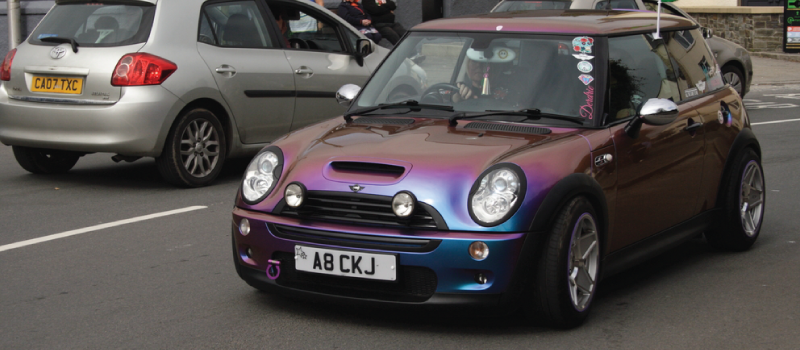
What happens to a personalised reg plate when you scrap your car?
11th Sep, 2019
Personalised registration plates aren’t cheap, so if you’ve got one, you’ll probably be happy to learn that you don’t necessarily have to get rid of it when you scrap your car. Now, aside from routine memorisation, most of us often don’t give our number plates a second thought. However, if you have a personalised number plate (or you’re considering getting one), it helps to bear in mind that they’re governed by a whole range of laws and regulations, since they effectively act as your car’s individual name badge.
They’re monitored and approved by the DVLA, which has final say in everything from the details of their fabrication right through to what happens to them when you scrap your car. Here, we’ve summed up some of the main things that it’s worth bearing in mind about personalised registration plates – we’ll start with the most pressing question first!
Can I keep my personalised number plate when I scrap my car?
Absolutely. You just need to apply to do so, which involves filling out a simple form on the government’s website. Your application will be valid as long as your car is registered with the DVLA and is taxed appropriately, or has a SORN which is over five years old. Sometimes, the DVLA may want to inspect the car first, but this is usually a formality and so not something to generally worry about.
How do I keep my personalised number plate?
Simply fill out the V317 on the gov.uk website, which will provide the DVLA with all the necessary information for your application. It’s not a free service, though, and will set you back £80. If you plan on transferring this number plate to a new car of yours, you’ll need the current vehicle’s V5C certificate (sometimes known as your logbook). Alternatively, if you’ve bought your current car in a private sale, you’ll need the V5C/2 new keeper’s section of the previous owners V5C.
What are the rules for displaying personal registration plates?
The law states that all registration plates need to be consistent in a number of specific ways – which makes sense, really, when you consider that the DVLA uses them to ensure that all vehicles on the road are taxed and legally permitted to be there. It also helps police and other emergency services to quickly identify vehicles, cutting down on automotive crimes like fraud and car theft.
The main requirements for all registration plates are as follows:
- They must be made from a reflective material
- The front plate must display black characters on a white background
- The rear plate must display black characters on a yellow background
- It cannot have a background pattern
As of the 1st of September, they all must be one particular font, too, but you won’t need to worry about whether your plate deviates from that. Cars manufactured before that date aren’t required to change their existing plates, and you’ll have a lot of difficulty finding a new car that doesn’t stick to that format.
While you can’t have any sports emblems, religious symbols, or background designs, you may not know that you can actually have one of several flags on your car. This includes:
- The Union Jack
- The Cross of St George
- The Cross of St Andrew (otherwise known as the Saltire, or Scottish flag)
- The Red Dragon of Wales
However, if you do opt to incorporate a flag onto your number plate, be aware that you still have to display a GB sticker if you take your car abroad!
The format for number plates
You’re probably familiar with the standard format for number plates, whether or not you consciously realise it – there are two letters, then two numbers, then a space, and then three final letters.
The first two letters comprise the DVLA memory tag, which is basically the shorthand for a specific city or town. London, for example, can be LN, whereas Preston can be PR. (We say ‘can be’ because most of the larger towns and cities have multiple abbreviations associated with them – London also has LA, LB, LS, LJ and so on, whereas Preston also has PA, PB, PK, PP, PX… You get the idea!)
The next two numbers refer to the age of the vehicle, and change twice each year. For example, if a car was manufactured between January 2006 and January 2007, it might have either an 05 or an 06 number plate. The last three letters are simple – they’re just random!
The law is very clear on the fact that you can’t deliberately alter or rearrange the numbers and letters to form words – which means you can’t use screws or bolts to alter their formation. If you want a personalised number plate, you have to order one!
You also can’t use a private number to make an older vehicle look newer than it is (which is something people have been caught doing). For example, you can’t use a 08 registration number on a 03 vehicle.
A number plate that doesn’t display the registration number correctly could be subject to a £1000 fine. That’s applicable regardless of intent – that means the onus is on you to make sure your reg number is displayed correctly at all times!
How to get a private number plate
So, if you’ve decided you want a snazzy number plate to distinguish your car from the crowd, it’s definitely not a DIY job – as we’ve covered, that would be highly illegal. Private number plates can only be supplied by a registered number plate supplier, who will want to see proof of ID, and proof that you’re legally permitted to use the number plate you’re applying for.
 You’ll only need a couple of things to hand – namely your driving licence, a utility or council tax bill rom the last six months, a bank or building statement society dated within the last twelve months, and your national identity card.
You’ll only need a couple of things to hand – namely your driving licence, a utility or council tax bill rom the last six months, a bank or building statement society dated within the last twelve months, and your national identity card.
Happily, scrapping your car is just as simple. We’ll just need to see your ID, and proof that you’re the car’s legal owner. If you’ve lost your V5C, we can even scrap your car without it! (Again, as long as you can prove you’re the legal owner, we’re all good to go!) Scrapping your car has seriously never been easier – all you need to get started is an instant online quote. You can get one right here on our website, too. Just enter in your car reg and postcode into our homepage, and find out what your car is worth!